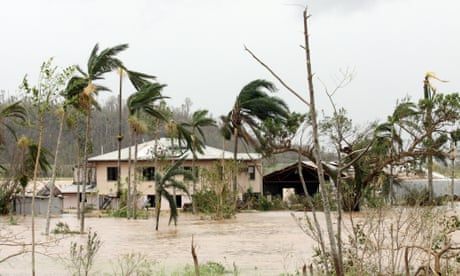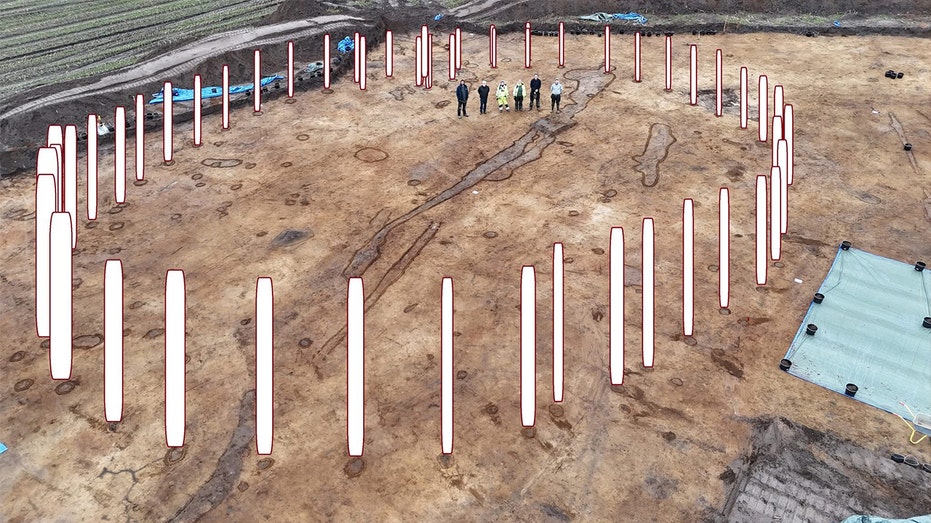- by foxnews
- 10 Mar 2025
La Niña set to intensify Australia’s cyclone season, raising risk of flooding
La Niña set to intensify Australia’s cyclone season, raising risk of flooding
- by theguardian
- 20 Nov 2022
- in news

The coming tropical cyclone season threatens to inflict more flooding on northern and eastern Australia, elevating demands on emergency authorities to "another level", a senior Bureau of Meteorology climatologist has said.
Greg Browning, a specialist who helps prepare the bureau's cyclone forecast, said disaster management crews had warned since August to prepare for more wild weather wreaked by cyclones.
Last month, the bureau said Australia could expect the number of cyclones during the November-April season to be at or slightly above the average of 11.
"[W]ith an already wet landscape and above-average rainfall likely, there is an increased risk of widespread flooding for eastern and northern Australia," it said.
Browning said the tropics could be "very fickle", but it looked as though numbers might be higher this season than in recent years.
The recent floods in Victoria and NSW were made worse by tropical moisture being drawn south. Should a tropical low travel over already saturated regions, it would potentially be devastating and "obviously up to another level" in terms of demands on emergency workers and communities, Browning said.
This season's odds for cyclones have been lifted by the extent of warmer-than-average waters to Australia's north and north-east. Sea-surface temperatures were close to record levels, particularly around the Coral Sea, Browning said.
Other factors also play a role. A strong eastward-moving pulse of clouds and rain, known as the Madden-Julian Oscillation, could be one trigger. The development of a monsoon trough or a pre-existing tropical low that draws humidity high into the atmosphere and helps spawn a belt of thunderstorms can also foster cyclones.
"It's just such a complicated process to actually get to the stage of forming a tropical cyclone," Browning said. That complexity makes it hard to get a precise reading on the number of cyclones expected and when and where they might form.
A year with 11 or more cyclones would be unusual given a noted drop in the frequency of cyclones in the south-west Pacific since 2000. Some researchers have lately questioned whether natural variability may be at play rather than climate change, but Browning said other studies suggested changing wind patterns might make it harder for cyclones to develop.
"One thing that cyclones really need is to have a pretty constant wind profile up through the atmosphere," he said. Having strong winds in one direction and more coming from another angle, the cyclone centre will be ripped apart.
"We're basically seeing throughout the broader atmosphere an increase in vertical wind shear," Browning said. "That may be one of those things that means, in certain areas, cyclone formation is actually delayed or retarded or becomes less conducive in a global warming environment."
The two next busiest seasons, 1970-71 and 1983-84, had 18. The latter season set a high mark for the number of severe cyclones, with 12 reaching at least category 3 strength, with winds of 118-159km/h and gusts of 224km/h or more.
Browning said there were "already some hints" that a hotter atmosphere was leading to a more rapid intensification of tropical cyclones once they started forming. While some ocean basins were already seeing a greater proportion of cyclones reaching category 4 or 5, "there really hasn't been any good evidence of that happening yet in the Australian region", he said.
The bureau said there was also an increased risk of marine heatwaves, particularly around the north-east of Australia. Offshore regions such as WA's Ningaloo Reef may also face unusual warmth.
"I think a coral bleaching marine heatwave situation is a high likelihood in the coming months," Browning said.
The Great Barrier Reef has suffered six mass bleaching events - when stressed corals expel the zooxanthellae algae that give them colour and essential nutrients - since 1998, including four since 2016.
- by foxnews
- descember 09, 2016
Ancient structure used for cult 'rituals' discovered by archaeologists
A Neolithic Timber Circle was discovered by archeologists in Denmark resembling the historical landmark Stonehenge in the U.K. It is open to be viewed by the public.
read more


